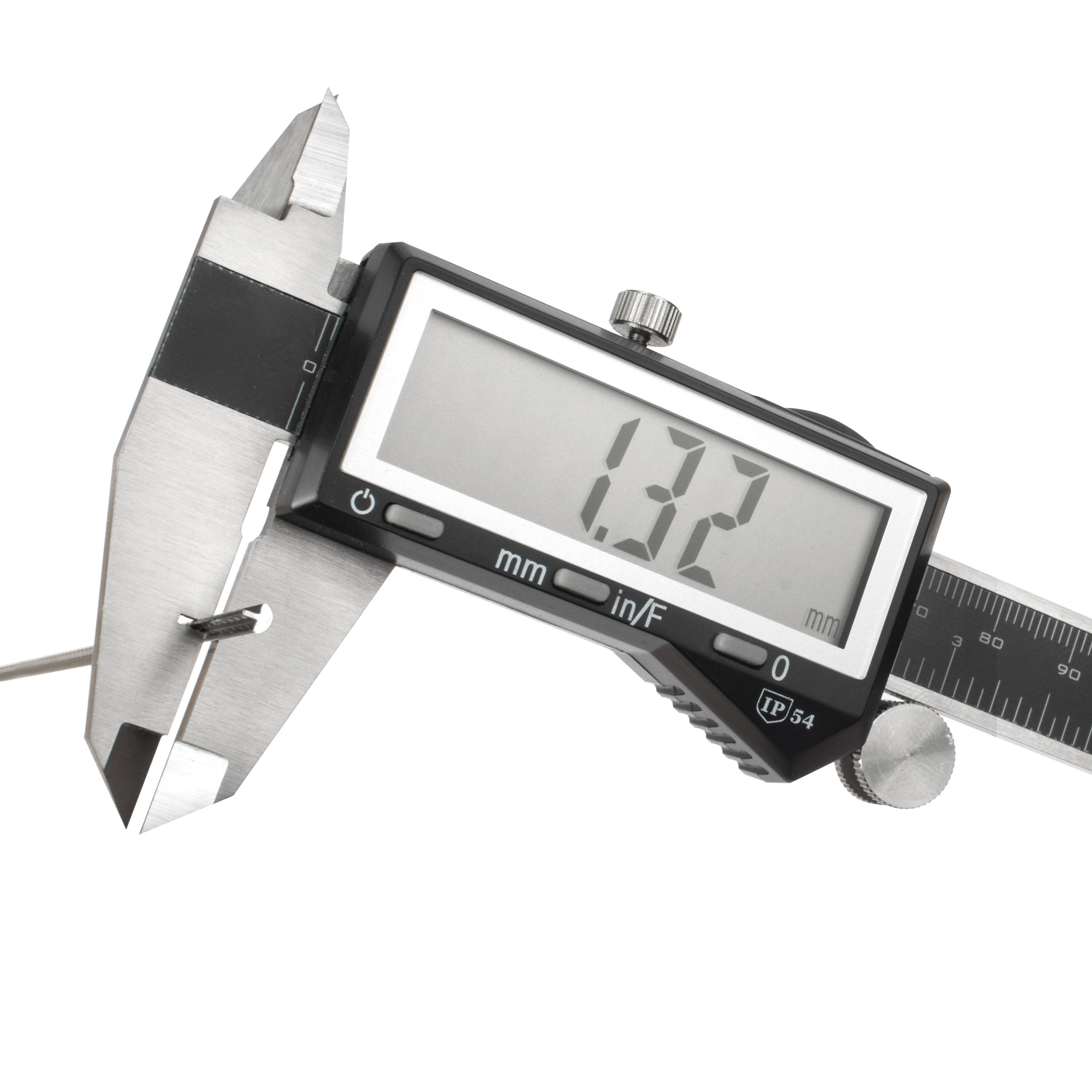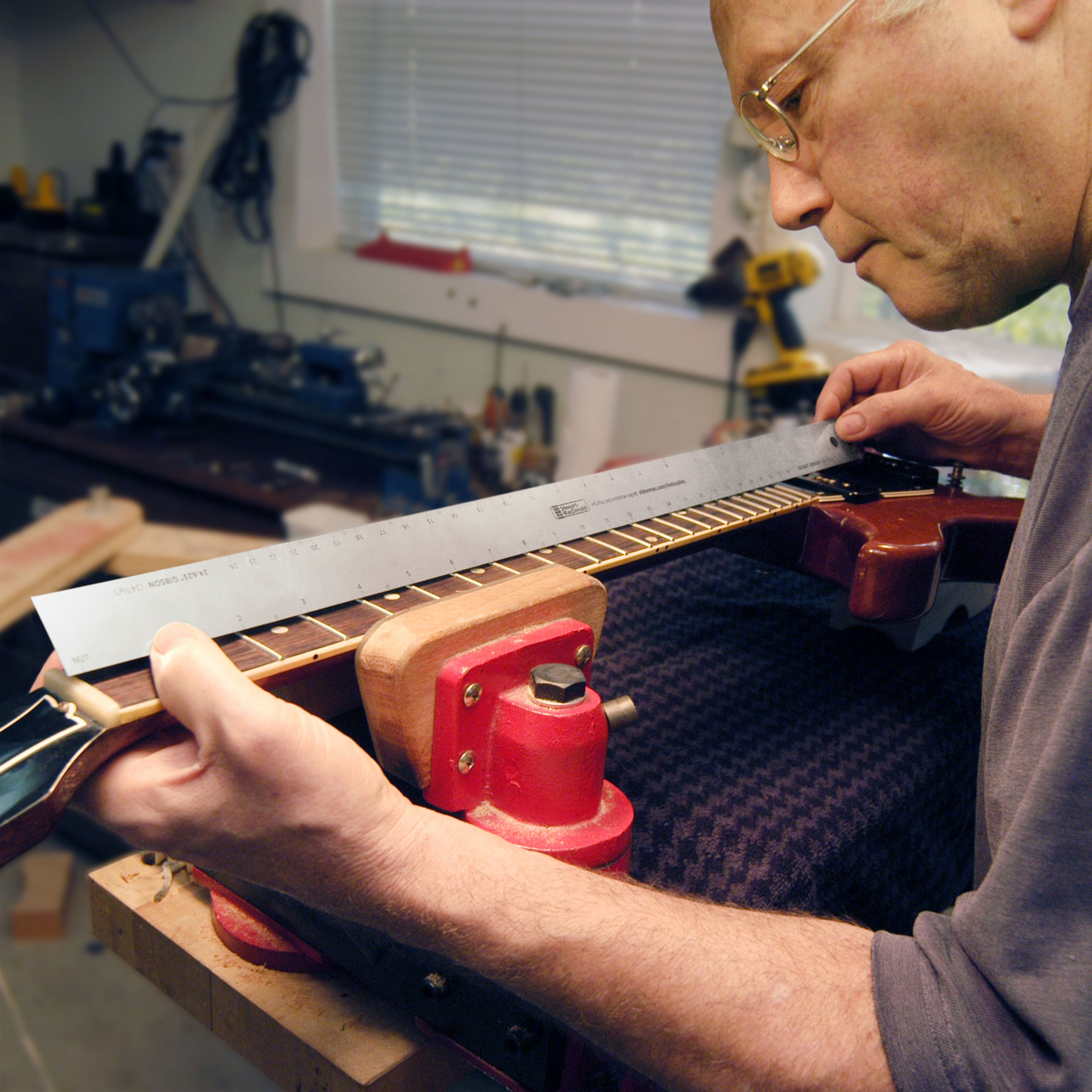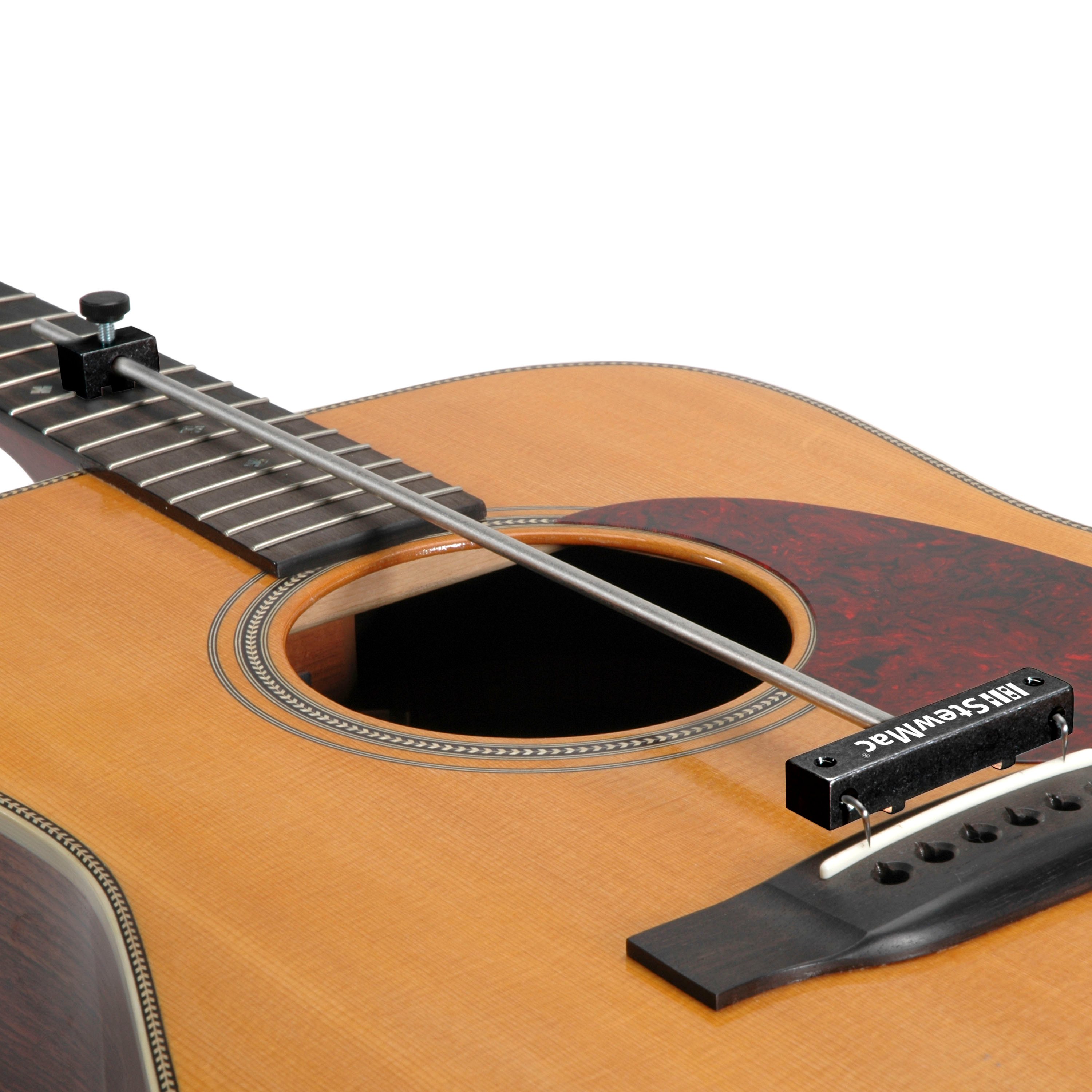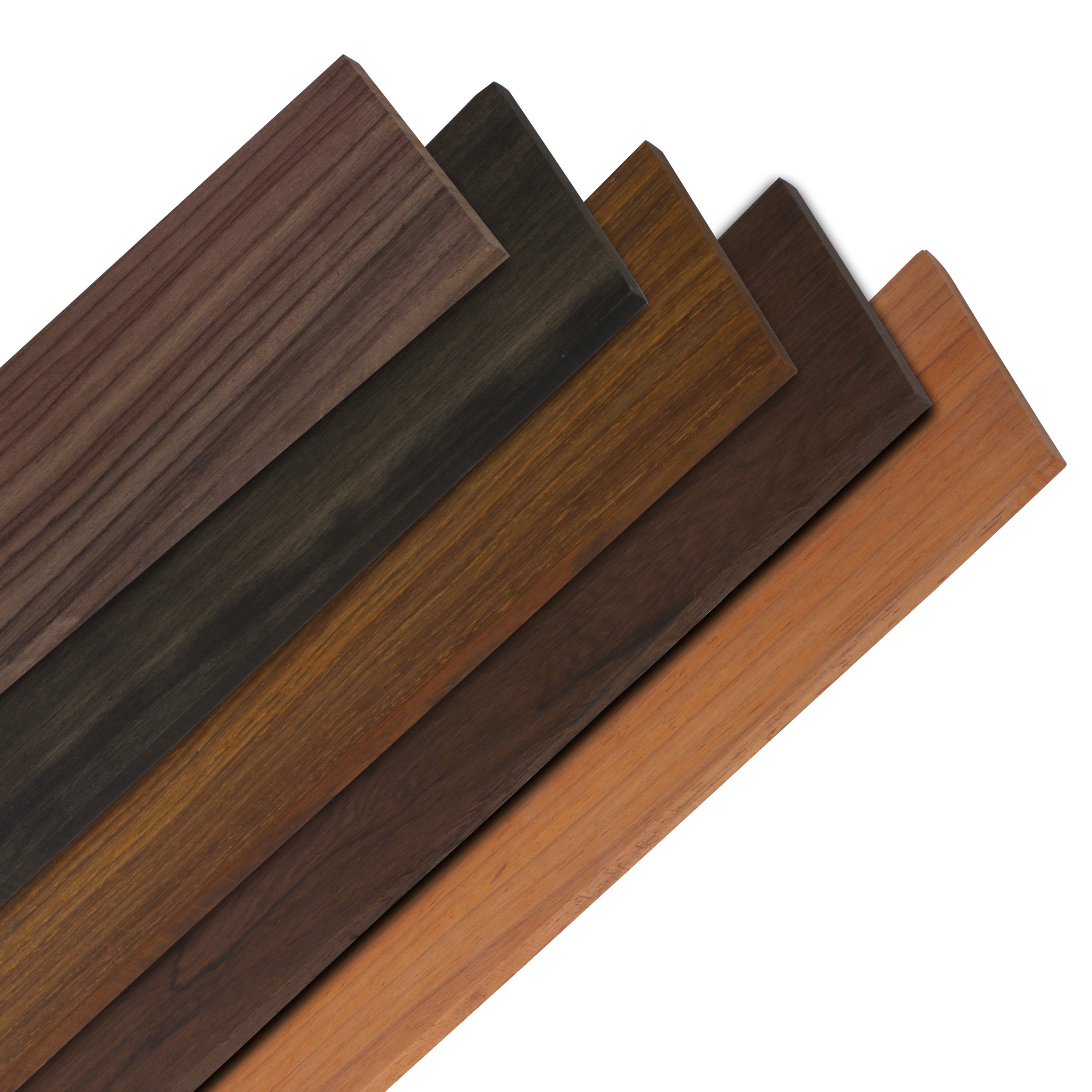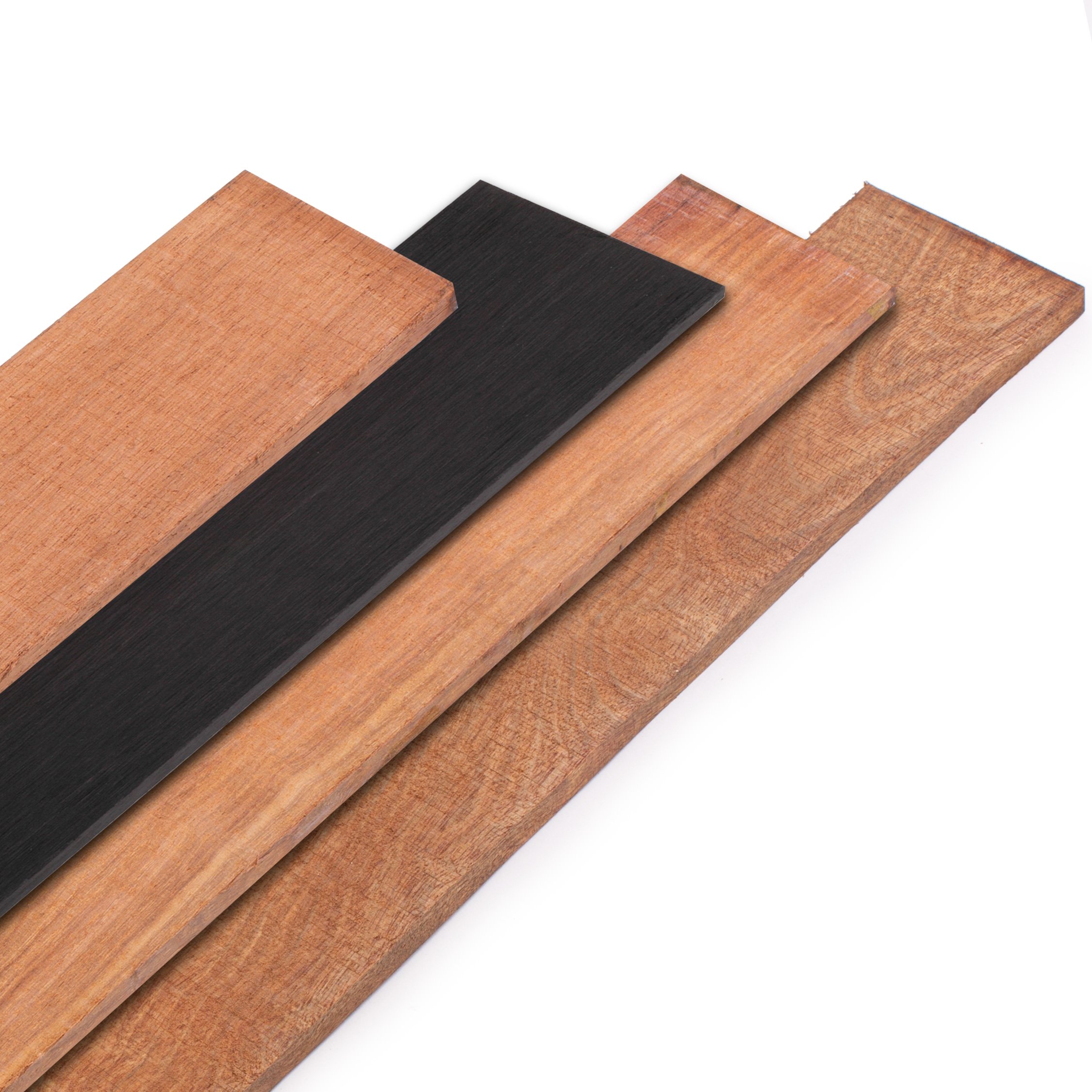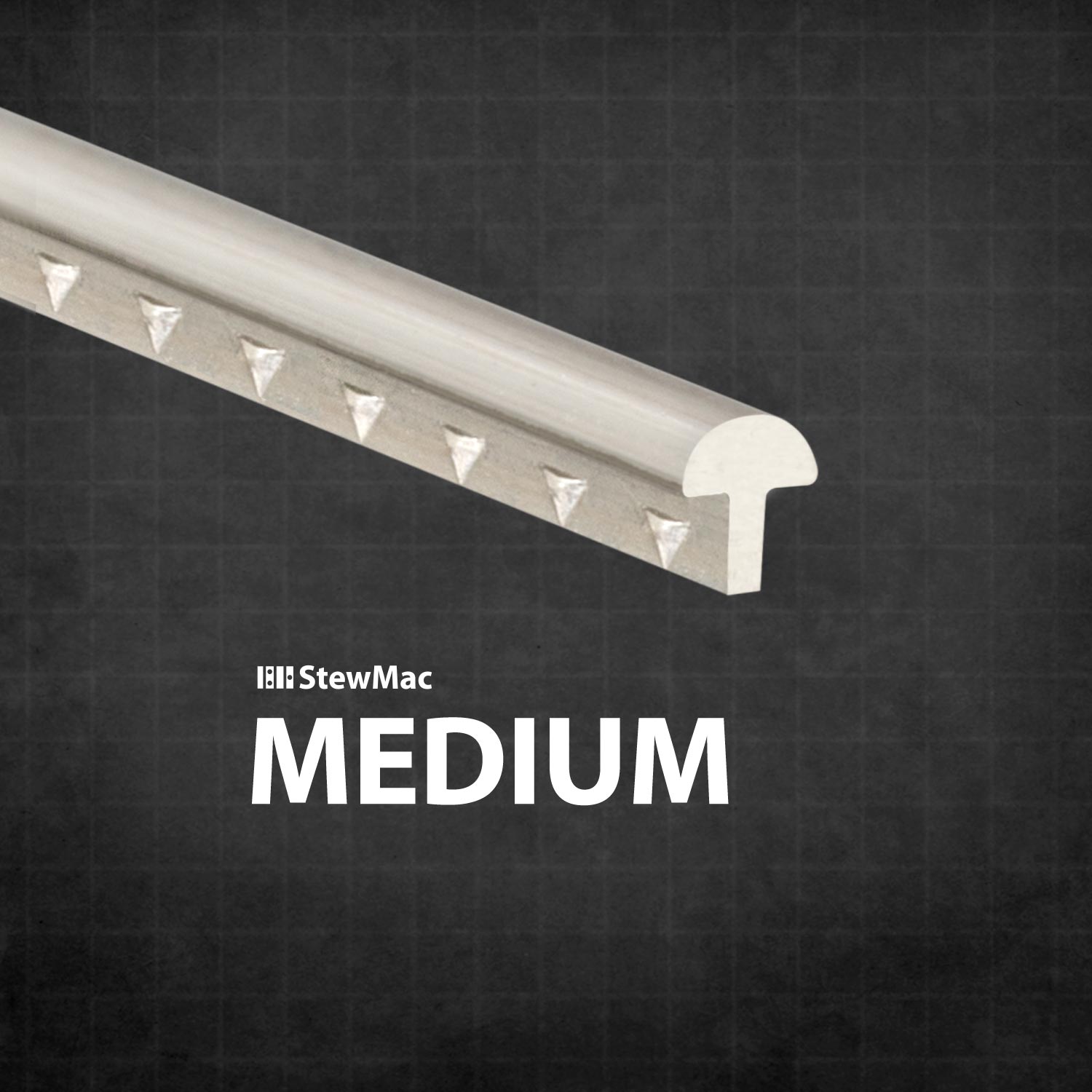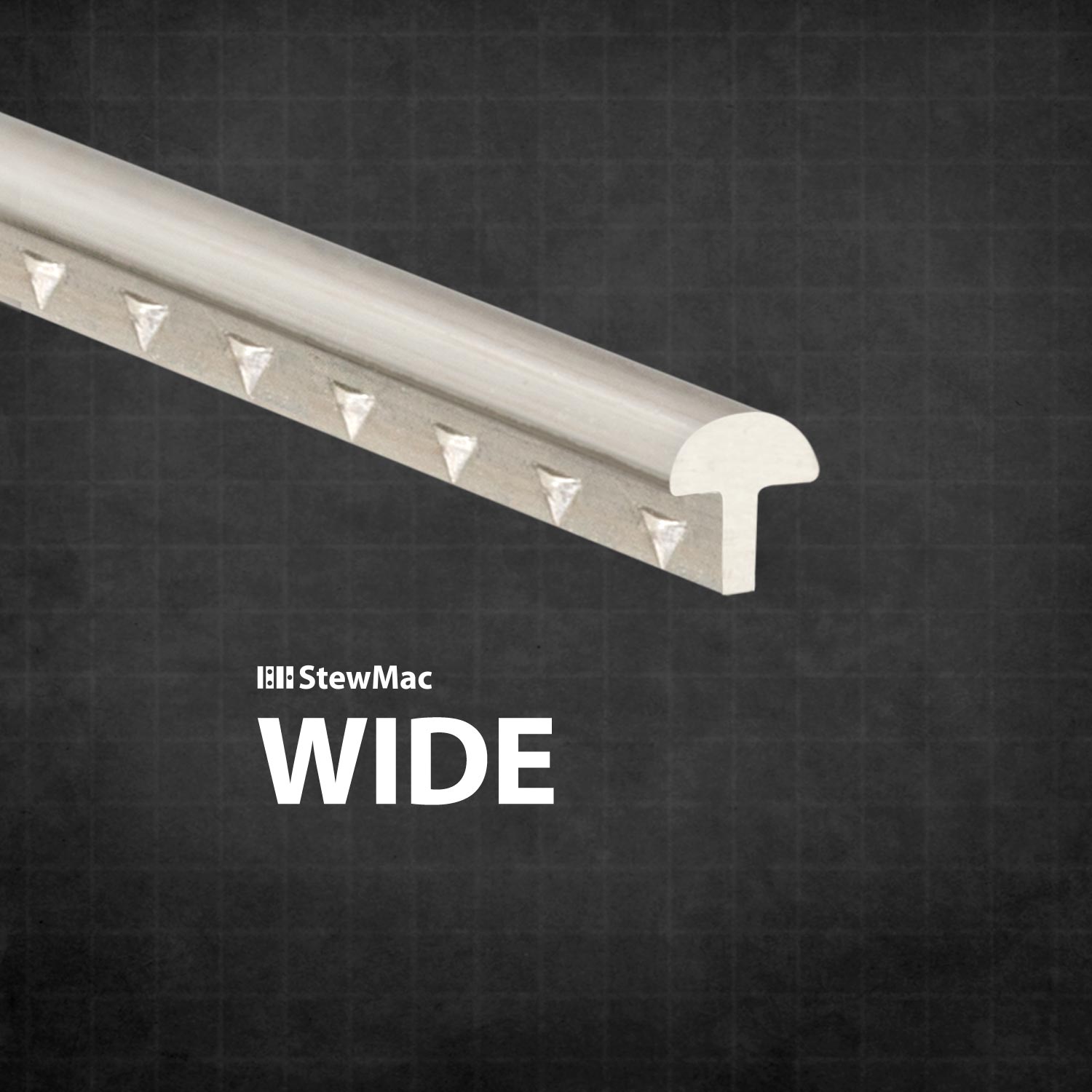Scale Length Explained
Finding your scale length, how it affects tone, and more.
IN THIS ARTICLE
| • What is scale length? • How scale length affects tone • Common scale lengths |
A-SCALELENGTH
WHAT IS SCALE LENGTH?
HOW SCALE LENGTH AFFECTS TONE
Fender
One of the most common scale lengths is the Fender 25-1/2" guitar scale. Found on Stratocasters®, Telecasters®, and the huge variety of instruments inspired by them as well as the replacement, and custom parts available for them.
The 25-1/2" produces a rich, strong, bell-like tone, and defined low-end.
Gibson
The Gibson 24-3/4" scale is also very common, but it is also the most confusing of all scale lengths—this is because it rarely ever measures out to be 24-3/4 inches! This scale has gradually changed over the past fifty or so years due to changes in production equipment.

Being shorter than the Fender 25-1/2" scale, the Gibson 24-3/4" scale has a lower tension/easier to play feel, and a warmer tone.
PRS, Dobro, & National
When luthier Paul Reed Smith was developing his now highly desirable guitars, he was looking to capture the harmonic richness of the Fender electric's tone as well as the fullness, warmth, and playability of the Gibson electric guitars. PRS opted for a scale length of 25", which is also found on Dobro and National guitars.
The bass strings on a 25" scale are fuller sounding than some 24-3/4" instruments, which can sometimes sound muddy. The treble strings are not only easier to bend than on a 25-1/2" scale, but also have a warmer, and fuller tone.
COMMON SCALE LENGTHS
Strat®, Stratocaster®, Tele®, Telecaster® are registered trademarks of Fender Musical Instruments Corporation. Les Paul® and Byrdland® are trademarks of Gibson Guitar Corporation.
A guitar's scale length is calculated by measuring the distance from the front edge of the nut, where it butts against the end of the fingerboard, to the center of the 12th (octave) fret, then doubling that measurement.
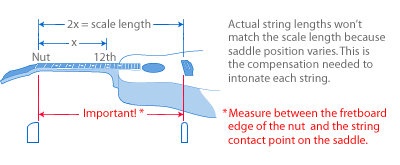 If your 1930's Gibson L-OO, for example, measures 12-3/8" at the 12th fret, then your guitar's scale length is twice that—a 24-3/4" scale. For good intonation, the guitar's saddle will be placed so a little extra string length is added. This extra length is called "compensation," and it means the actual string length is longer than its 24-3/4" scale measurement. At the center of the saddle it will be closer to 24-7/8". Compensation varies for different strings, and that's why your saddle is placed at an angle. |
 Need help computing or laying out a fret scale? Our online Fret Calculator will do the math as well as help you locate your bridge correctly. |
HOW SCALE LENGTH AFFECTS TONE
Fender
One of the most common scale lengths is the Fender 25-1/2" guitar scale. Found on Stratocasters®, Telecasters®, and the huge variety of instruments inspired by them as well as the replacement, and custom parts available for them.
The 25-1/2" produces a rich, strong, bell-like tone, and defined low-end.
Gibson
The Gibson 24-3/4" scale is also very common, but it is also the most confusing of all scale lengths—this is because it rarely ever measures out to be 24-3/4 inches! This scale has gradually changed over the past fifty or so years due to changes in production equipment.

Being shorter than the Fender 25-1/2" scale, the Gibson 24-3/4" scale has a lower tension/easier to play feel, and a warmer tone.
PRS, Dobro, & National
When luthier Paul Reed Smith was developing his now highly desirable guitars, he was looking to capture the harmonic richness of the Fender electric's tone as well as the fullness, warmth, and playability of the Gibson electric guitars. PRS opted for a scale length of 25", which is also found on Dobro and National guitars.
The bass strings on a 25" scale are fuller sounding than some 24-3/4" instruments, which can sometimes sound muddy. The treble strings are not only easier to bend than on a 25-1/2" scale, but also have a warmer, and fuller tone.
COMMON SCALE LENGTHS
|
|
Strat®, Stratocaster®, Tele®, Telecaster® are registered trademarks of Fender Musical Instruments Corporation. Les Paul® and Byrdland® are trademarks of Gibson Guitar Corporation.
